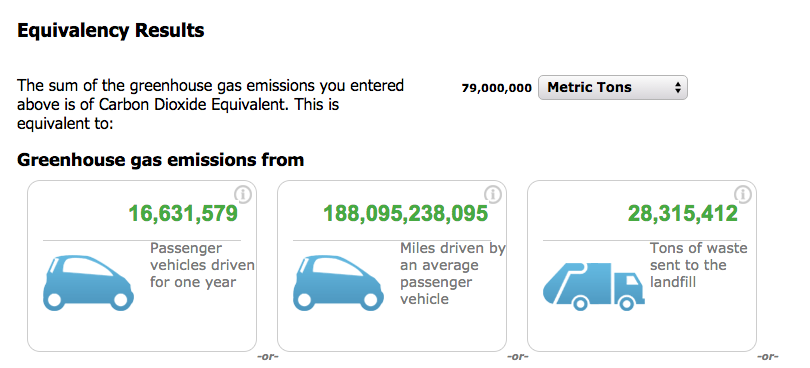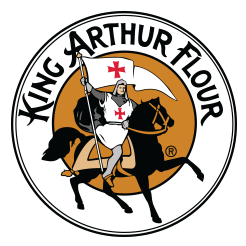By: Diana Connolly
 The SOCAP team aims to produce our annual conference in alignment with our commitment to environmental and social responsibility. As the production manager, I have an important role in making sure we make informed purchasing decisions and form strategic partnerships with our venue and vendors. Here are a few of the sustainable practices we put into place at SOCAP15:
The SOCAP team aims to produce our annual conference in alignment with our commitment to environmental and social responsibility. As the production manager, I have an important role in making sure we make informed purchasing decisions and form strategic partnerships with our venue and vendors. Here are a few of the sustainable practices we put into place at SOCAP15:
Environmental Impact: By Air, Land, and Sea
Air (carbon and other emissions)
 By partnering with Acre Gourmet, our catering is made with organic, locally sourced foods, resulting in low food miles and lower greenhouse gas emissions.
By partnering with Acre Gourmet, our catering is made with organic, locally sourced foods, resulting in low food miles and lower greenhouse gas emissions.
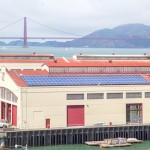
We selected San Francisco’s Fort Mason Center as our venue for the first SOCAP in 2008, and continue to enjoy this unique location. Among their many environmental initiatives, Fort Mason has invested in a massive solar array on the Herbst Pavilion to reduce the reliance on electricity generated by coal plants – the number one contributor to global warming.
Land
We aim to protect our natural resources. To do that we avoid use of non-renewable resources, and Reduce, Reuse, and Recycle to limit our additions to the community landfill. Here are a few of the ways we lessen our impact:
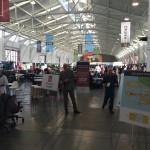 We reduce the use of non-renewable resources by renting existing AV, IT, equipment and event furnishings.
We reduce the use of non-renewable resources by renting existing AV, IT, equipment and event furnishings.
We reduce use of plastic bottles by partnering with US PureWater, a company that serves green events like SOCAP with a bulk water solution that prevents hundreds of thousands of bottles from landing in the waste stream. We reuse signs from year to year.
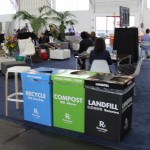 We retain SF Conservation Corp to sort all event and catering waste. SFCC typically is able to divert 90-95% of our event waste from the landfill, instead recycling or composting almost all materials.
We retain SF Conservation Corp to sort all event and catering waste. SFCC typically is able to divert 90-95% of our event waste from the landfill, instead recycling or composting almost all materials.
Our print and signage vendors: Minute Man, Essence Printing, and Image4 use 100% recyclable materials, FSC approved paper and organic inks.
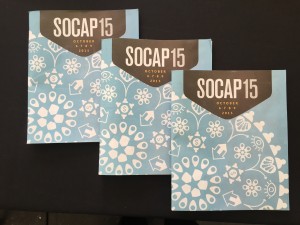
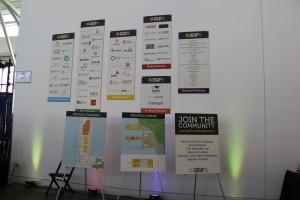
Sea
 By partnering with an organic caterer, we are ensuring that we support organic farmers whose practices include avoiding pesticides or toxic variations of fertilizers becoming an effluent to groundwater, rivers and oceans.
By partnering with an organic caterer, we are ensuring that we support organic farmers whose practices include avoiding pesticides or toxic variations of fertilizers becoming an effluent to groundwater, rivers and oceans.
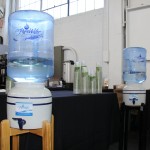 We conserve water by distributing water via bulk water bubblers, so attendees drink only what they require.
We conserve water by distributing water via bulk water bubblers, so attendees drink only what they require.
Social Responsibility and Impact: Informed sourcing
T-Shirts
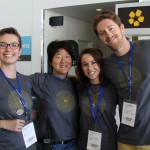 Our SOCAP volunteer t-shirts are printed by Ashbury Images – a social enterprise that provides job training for at-risk youth.
Our SOCAP volunteer t-shirts are printed by Ashbury Images – a social enterprise that provides job training for at-risk youth.
Marketplace – Supporting Social Enterprises
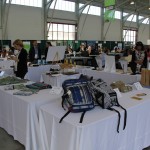 The Marketplace at SOCAP supports social enterprises who have an eye towards fair labor, ethically sourced materials, and who help create wealth for underserved communities.
The Marketplace at SOCAP supports social enterprises who have an eye towards fair labor, ethically sourced materials, and who help create wealth for underserved communities.
Why All Events Should Be Green Events
From public conferences, to industry meetings, to world summits, events are where people gather to announce academic breakthroughs, discuss industry changes and societal challenges, and put forth our best ideas and thought leadership. Live events are not going away.
Unfortunately, there is a shadow side to the event industry. Large scale events have a big environmental and social impact. Environmental impacts include landfill waste, toxics, and water usage. Social impacts can involve human and labor rights in a global supply chain.
Carbon emission data can give a sense of the scale of this industry and its footprint. There are 1.8 million meetings in the U.S. alone each year. Meetgreen, a green meetings leader, calculates that each attendee at an average event produces .176 metric tons (MT) of CO2 per event day.1 In 2012, in the U.S.alone, 225 million people attended meetings2. With 225M participants attending an average of two days per event, that’s 79.2 million MT of CO2 per year. How much is that? According to the EPA, that’s the same amount of CO2 emitted by 16.6 million cars for an entire year3, more than all the cars currently registered in all of California.
All of us who plan events need to understand how the decisions we make at even the smallest level contribute to a global industry impact. At SOCAP, we act on our values by making informed decisions in order to minimize our impact and support vendors and suppliers who are making a difference.
Diana Connolly founded event production company Groundswell Marketing in 1994, after a combined ten years in corporate marketing and the trade show exhibit industry. Her clients are primarily in the technology sector, and range from start-ups to the Fortune 100. Ms. Connolly has an MBA in Sustainable Enterprise and is passionate about triple bottom line results. You can learn more at Groundswell Marketing, or contact Diana via Linkedin or e-mail.
Article Sources
1 http://meetgreen.com/wp-content/uploads/2015/05/eventfoot.pdf
2 statista.com/statistics/197538/number-of-participants-in-business-meetings-in-the-us/
3 http://www2.epa.gov/energy/greenhouse-gas-equivalencies-calculator
